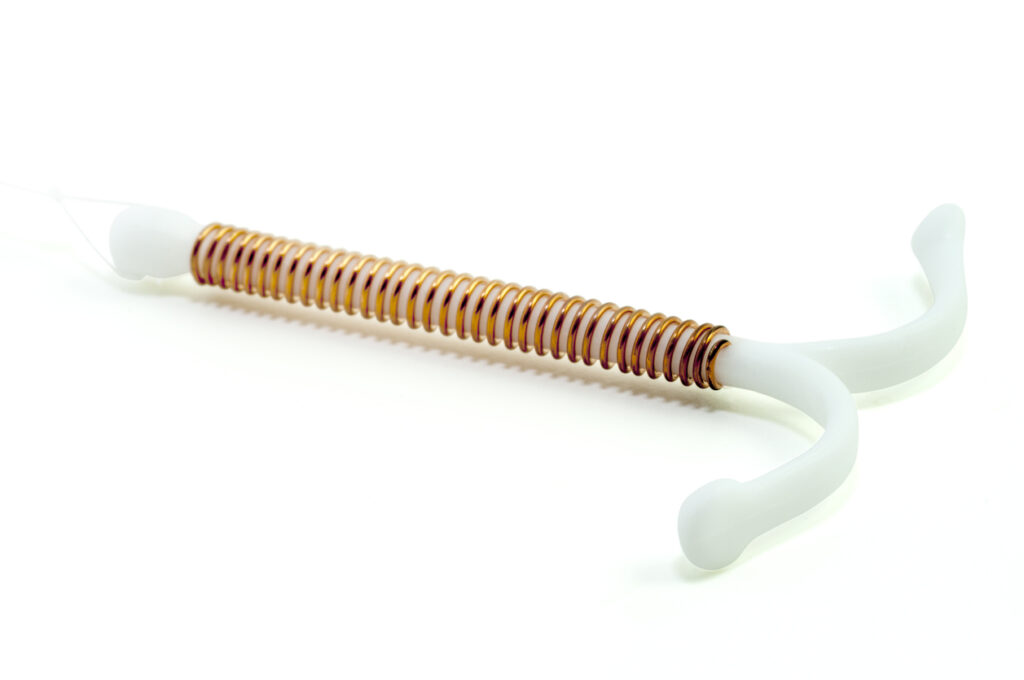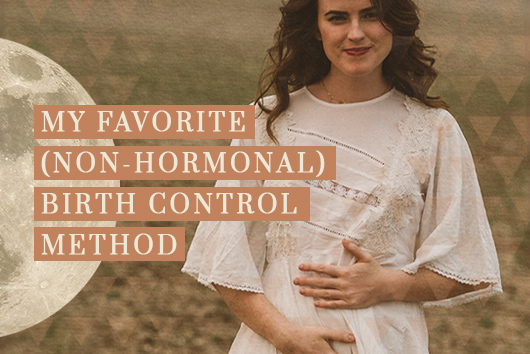Hormonal IUD vs. Copper IUD

Usha Anandi. 10 | AUGUST | 2024
Today, I’m laying down the facts for you, answering your questions like:
- What is the difference between the non-hormonal IUD and the hormonal IUD?
- How do both birth control options work?
- What are the benefits of the non-hormonal and the hormonal IUD?
- What are the side effects of the non-hormonal and the hormonal IUD?
Before you ask “Which one is better?”
At Womben Wellness, we don’t believe in telling you what’s right for your body. Instead we focus on giving you the facts and laying out the information so that you can decide.
If you’re feeling disconnected from your body and looking for a deeper container to actually get into your body and start feeling your inner wisdom and instinct, then apply now for my 7-Day Womb & Voice Somatic Healing Retreat.
Click here to fill out your 5-minute application to join me in the pristine and tranquil island paradise of Paros, Greece… where you will dive head first into repairing your connection to your womb, other women, and the earth from April 5 – April 11, 2025.
And now, onto your question, is an IUD right for you?
Watch the video below and decide. (and if you’re not a video person, no worries! We’ve got the whole video outlined for you below as well).
The question every womban should know the answer to before they put any device in their uterus is: “How does it work?”
Let’s break it down: There are two kinds of intrauterine devices (IUDs) on the market.
The first, a hormonal IUD (Mirena), which is a T-shaped plastic frame that gets inserted into the uterus where it releases a synthetic hormone called progestin, which mimics some of the impacts of the natural hormone progesterone.
The second, is a non-hormonal copper IUD (Paragard), which is also inserted into the uterus where the copper makes the environment inhospitable to sperm, therefore preventing pregnancy.
Before we dive deeper, let’s get one thing clear: The biggest difference between both devices is that one releases hormones whereas the other is non-hormonal, its contraceptive power coming from its copper coil.
Now that we have a better understanding of what we’re talking about, let’s dive deeper and take a closer look at each birth control option, shall we?

Hormonal IUD (Mirena)
To insert the hormonal IUD, you have to schedule an appointment with your health-care provider, in most cases a gynecologist. But depending on where you live, a midwife may be able to insert and remove an IUD.
Once inserted, the hormonal IUD releases a localized synthetic form of progesterone that thickens your cervical mucus and makes it more difficult for sperm to move through the cervix. It also thins the lining of the uterus which in turn prevents the egg from implanting itself.
Benefits of the hormonal IUD
What’s great about the hormonal intrauterine device (Mirena) is that it can be used by those who can’t take the combo pill, like Mothers who are currently breastfeeding, or womben who struggle with migraines with aura.
And unlike the pill, which suppresses both ovulation AND stops true menstruation, the hormonal IUD only lightens or stops menstruation and suppresses ovulation some of the time… At least that’s better than ALL the time!
“Why is this important?”, you might wonder.
Because ovulation matters – whether or not you want to get pregnant. Each ovulatory cycle provides the body with a cocktail of natural hormones that support brain health, breast health, cardiovascular health, and bone health.
When we’re not ovulating, either because we’re suppressing ovulation with synthetic hormones (like the pill) or because we have anovulatory cycles (due to stress, lack of sleep, travel, or conditions like PCOS), we’re missing out on exposure to these vitality-preserving hormones every month.
See what we’re talking about?
So, even when you’re using the hormonal IUD (Mirena), you’re likely to still ovulate sometimes and receive the long-term benefits of decreased stroke, osteoporosis, heart disease, and breast cancer… AND you’re also preventing pregnancy.
If I wanted to be on a hormonal contraceptive, and was choosing between the pill or the hormonal IUD, I would go hormonal IUD all the way. (But that’s not my personal contraceptive choice, and I’ll explain why.)
Let’s summarize:
- When inserted correctly, the hormonal IUD is 99% effective.
- The released hormones are localized which means the hormonal IUD has less of a systemic effect on the body vs the pill (read our deep dive into the pill here).
- The hormonal IUD might dramatically reduce your menstrual flow, which can also lessen painful symptoms of endometriosis.
Sounds good right? Yes AND it’s important to remember that any hormonal birth control method also comes with side-effects… and of course there are! It’s a very western, allopathic idea that we could tamper physiological processes as important as ovulation and menstruation without any side effects.
Side effects of the hormonal IUD
- While the synthetic hormones in the Mirena IUD do have less of a systemic effect on the body, they can still affect your well-being in many different ways.
- Some of the reported side-effects of the hormonal IUD include acne, hair loss, unwanted hair growth, depression, breast pain, weight gain and anxiety.
And that’s only to name a few.
- Inserting the hormonal intrauterine device can be invasive and painful, and it’s also not accessible to everyone. Your body knows that this is a foreign object, and it loves you so much so that it might do anything to expel the IUD.
- Lastly, the Mirena IUD might damage your vaginal ecology and can create imbalance in your vaginal PH. This can lead to yeast infections and bacterial vaginosis. So, if you’re prone to chronic imbalances, you might want to pay extra attention here.
Now, you might be thinking “Ugh, that’s not for me. What about the non-hormonal IUD? Isn’t it less taxing on the body?”. Let’s find out.

Non-hormonal copper IUD (Paragard)
Similar to the hormonal IUD, a qualified healthcare practitioner will insert the paragard through the cervix and place it in your uterus. If you wish to remove the IUD at some point (or once it’s not effective anymore), you will have to schedule another appointment with your doctor (some women also remove it successfully at home without any issue).
After insertion, the copper coil changes the environment in the uterus and makes it inhospitable for sperm by acting as a spermicide. Copper, a trace mineral found naturally in low levels in the body, is toxic for sperm and will cut off their tails, take off their heads, etc. to keep them from swimming to the egg.
Benefits of the copper IUD
- If inserted correctly, the copper IUD is up to 99% effective.
- It works as a long-term birth control option which means that after insertion, it can be effective for 5-10 years, whereas the hormonal IUD is usually being taken out after 5-7 years.
- The copper IUD is hormone-free. That means it doesn’t stop ovulation, nor does it stop your menstrual cycle. So, you’re still receiving your delicious monthly hormone-cocktail of estrogen and progesterone which increases muscle tone and decreases overall inflammation.
However, hormone-free doesn’t mean side-effect free.
Side effects of the copper IUD
- Similar to the hormonal IUD, inserting the T-shaped copper IUD can be invasive and painful. Your body recognizes the intrauterine device as a foreign object, and might try to get rid of it.
- Many womben report heavier periods as a result of using the copper IUD. Check out some of the comments under this reel to hear what others have experienced.
- Ever heard of copper toxicity? Copper is a naturally occurring mineral in the body that is used to fight both inflammation and infection. If you’re sick, or struggling with an infection, your body draws upon the source of copper from the IUD (and doesn’t use the naturally occurring copper in the body). This might raise your systemic copper levels and may lead to overall copper toxicity. It’s stated on the Paragard’s website that it’s not recommended to use a paragard if you experience a pelvic infection, or are prone to them. Symptoms of copper toxicity include brain fog, irritability, fatigue, nausea, anxiety, cravings, and mood swings. Careful though: the symptoms of copper toxicity can be the same as the symptoms of copper deficiency. Always make sure to seek out a health care practitioner to check your copper levels before taking action yourself.
Choosing the right birth control for yourself is a personal decision, but to be able to make an empowered decision, you need to know your options…
And let us be clear in saying that no matter what method you choose, we support you. We celebrate you. And we’re right there with you cheering you on.
If all of this has you thinking… “F*ck this! Isn’t there a way to prevent pregnancy without harming my body?!” – there is!
Our favorite non-hormonal, and non-invasive birth control method is called FAM (the Fertility Awareness Method), and in this blog, we break it all down for you.
Learning about the four phases of your menstrual cycle, and the physical, hormonal, energetic and emotional changes that we go through every month is the first step in tracking fertility for either preventing pregnancy, or consciously planning conception.
If reading this blog has made you a little furious (writing it definitely has), and you’re now feeling the desire to dive deeper into menstrual health, I want you to come join me in Greece in Spring 2025 for my 7-Day Womb & Voice Somatic Retreat.
You’ll leave Paros, Greece with a personal connection to your feminine power and womb wisdom. This trust will manifest as an ability to walk through the world trusting yourself, listen and understand the language of your body and feel the presence of your womb – more powerfully than ever before.




